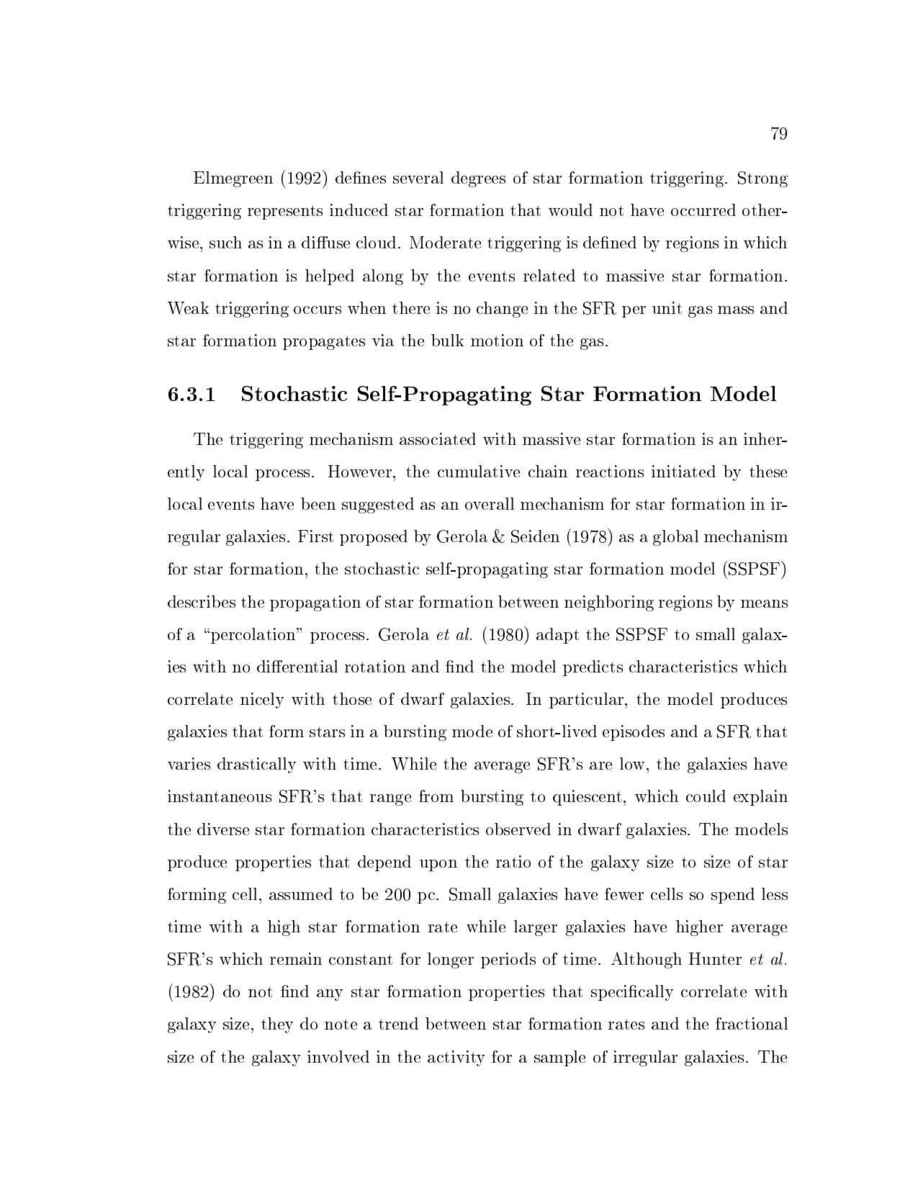Astronomical Applications Department, U.S. Naval Observatory thesis Page 93

79
Elmegreen 1992 de nes several degrees of star formation triggering. Strong
triggering represents induced star formation that would not have occurred other-
wise, such as in a di use cloud. Moderate triggering is de ned by regions in which
star formation is helped along by the events related to massive star formation.
Weak triggering occurs when there is no change in the SFR per unit gas mass and
star formation propagates via the bulk motion of the gas.
6.3.1 Stochastic Self-Propagating Star Formation Model
The triggering mechanism associated with massive star formation is an inher-
ently local process. However, the cumulative chain reactions initiated by these
local events have been suggested as an overall mechanism for star formation in ir-
regular galaxies. First proposed by Gerola & Seiden 1978 as a global mechanism
for star formation, the stochastic self-propagating star formation model SSPSF
describes the propagation of star formation between neighboring regions by means
of a percolation" process. Gerola
et
al.
1980 adapt the SSPSF to small galax-
ies with no di erential rotation and nd the model predicts characteristics which
correlate nicely with those of dwarf galaxies. In particular, the model produces
galaxies that form stars in a bursting mode of short-lived episodes and a SFR that
varies drastically with time. While the average SFR's are low, the galaxies have
instantaneous SFR's that range from bursting to quiescent, which could explain
the diverse star formation characteristics observed in dwarf galaxies. The models
produce properties that depend upon the ratio of the galaxy size to size of star
forming cell, assumed to be 200 pc. Small galaxies have fewer cells so spend less
time with a high star formation rate while larger galaxies have higher average
SFR's which remain constant for longer periods of time. Although Hunter
et
al.
1982 do not nd any star formation properties that speci cally correlate with
galaxy size, they do note a trend between star formation rates and the fractional
size of the galaxy involved in the activity for a sample of irregular galaxies. The
